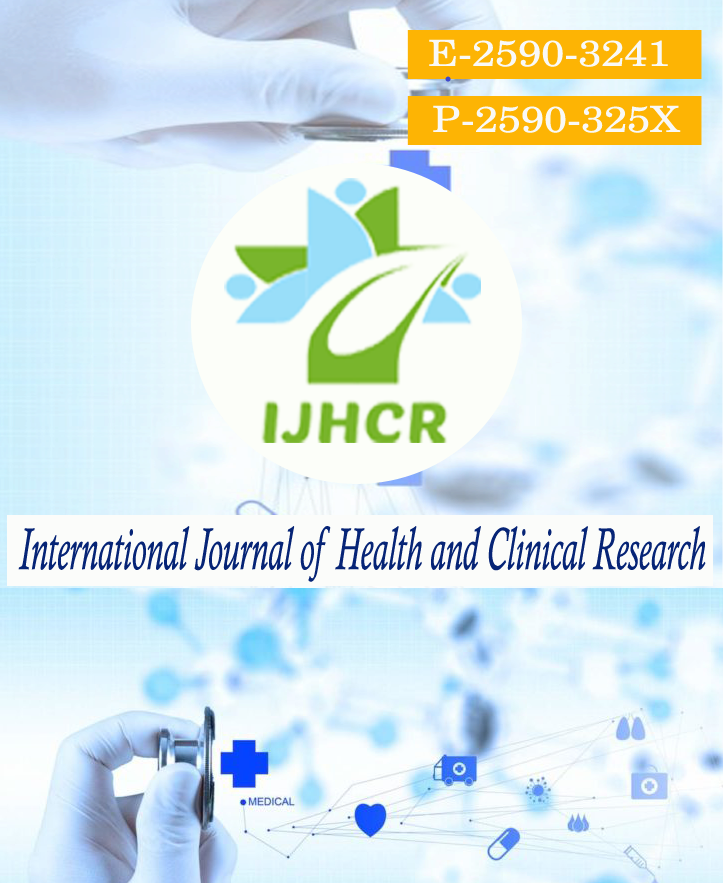Clinical profile and pattern of water and sodium disturbances in children suffering from diarrhoea with dehydration- experience of a tertiary care center
Keywords:
acute gastroenteritis, dehydration, diarrhea, hyponatremia, isonatremia, hypernatremia, ORS.Abstract
Background and Objectives: Diarrhoeal disorders contribute significantly to childhood morbidity as well as mortality. Despite much advancements in medical field, diarrhoea continues to be the 3rd most common cause of deathin children less than 5 years of age. The commonest cause of complications in acute diarrhoea is dehydration and dyselectrolytemia, particularly sodium disturbances. Thorough understanding of variousclinical features, high index of clinical suspicion, timely recognition and proper managementof different types of dehydration is necessary in preventing deaths. Based on this background, we intended to study the clinical profile as well as spectrum of sodium disturbances in children suffering from AGE with some to severe dehydration. Methodology: We conducted this prospective observational study over 1 year from September 2020 to August 2021 at department of Pediatrics, NMCH, Patna, Bihar including children of 6-60 months of age admitted with acute diarrhoea and clinical features suggestive of some or severe dehydration as per WHO criteria. Results: Over the study period, we enrolled 148 children. Of these, 90 were males and 58 were females. Mean age at presentation was 2.04 ± 0.97 years and mean weight on admission was 9.553 ± 3.826 Kg.Mean serum sodium level was 138.6 ± 8.25 mEq/L. Majority of children suffered from isonatremic dehydration (n= 89, 60.1%) followed by hyponatremic dehydration (n= 45, 30.4%) and hypernatremic dehydration (n= 14, 9.5%).Only 51 (34.5%) children had been administered ORS prior to admission, while the rest 97 (65.5%) were deprived of this life saving remedy. Of these only 18 (35.3%) were given ORS in appropriate dilution and the rest 33 (64.7%) were given either over- or under concentrated ORS. Malnutrition was found in 51 (34.5%) children. 27 (52.9%) of such malnourished children had hyponatremia, 14 (27.4%) had Isonatremia and 10 (19.6%) had hypernatremia.Duration of hospital stay was 3.67 ± 1.39 days. Duration of hospital stay was maximum in children with hypernatremia, however no statistically significant trend was found between type of sodium disturbance and duration of hospital stay (p=0.13). Average duration of hospital stay in malnourished children was higher (4.75 days) as compared to non-malnourished children (3.0 days) which was statistically significant (p<0.01). Unfortunately, 10 (6.75%) children died. Hypernatremic dehydration had the highest mortality rate (14.3%) as compared to hyponatremic dehydration (5.7%) or isonatremic dehydration (5.6%). But, no statistically significant trend was found between the type of sodium disturbance and mortality (p=0.17). Conclusion: The incidence of sodium disturbance (hyponatremia and hypernatremia) in children is quite high (nearly 40%). Malnourished children and children taking improperly diluted WHO ORS were at a significantly higher risk of developing hyponatremia or hypernatremia. Hypernatremia in AGE was noted to be significantly more in infants of 6-12 months when compared to 1–5-year-old children. AGE with hyponatremia or hypernatremia is significantly associated with increased risk of seizures, increased duration of hospital stay and increased risk of death as compared to AGE with isonatremia.
Downloads
Published
How to Cite
Issue
Section
License
Copyright (c) 2022 Manoj Kumar Ram, Dinesh Kumar Rajak, Girijanand Jha, Binod Kumar Singh, Alka Singh

This work is licensed under a Creative Commons Attribution 4.0 International License.






 All articles published in International Journal of Health and Clinical Research are licensed under a
All articles published in International Journal of Health and Clinical Research are licensed under a 